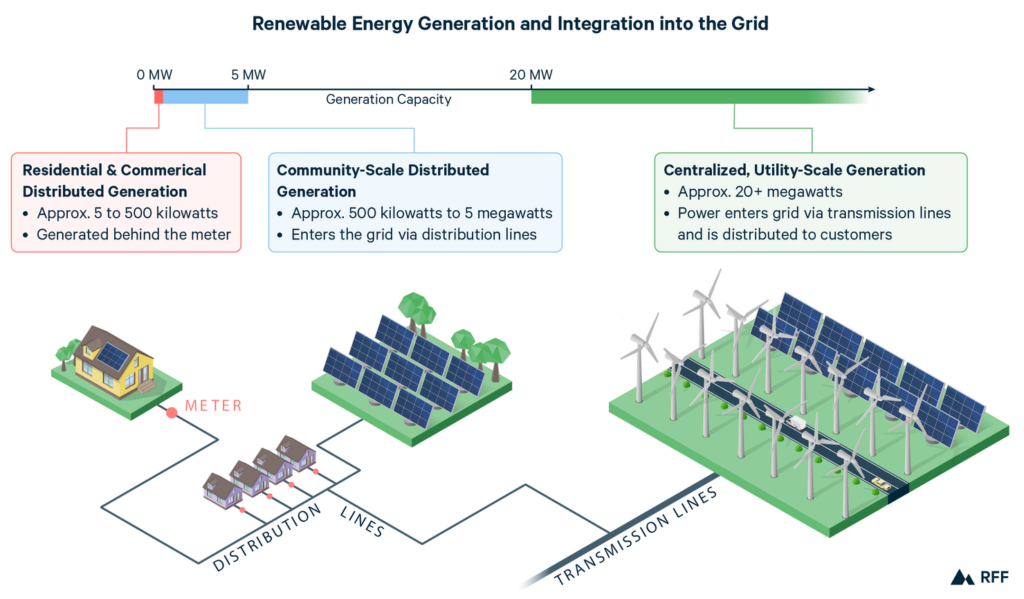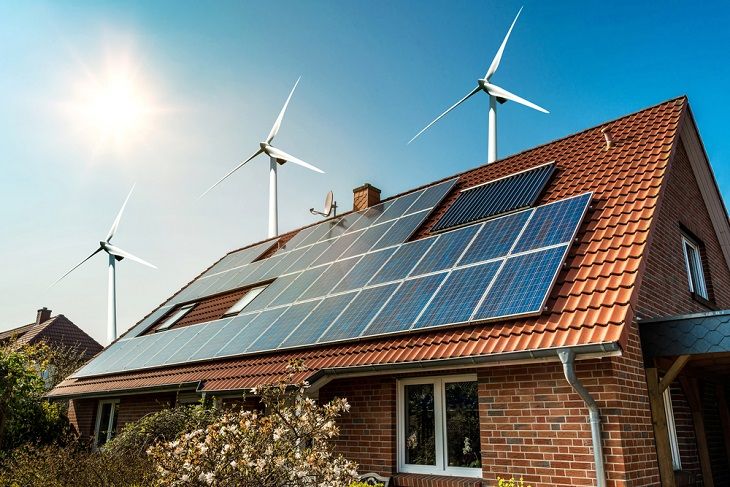Distributed Renewable Energy 101
Victoria Whalen, ACE Fellow
|September 3, 2021

Fossil fuels are a thing of the past. As climate change becomes a forefront for the future of our planet, many people are looking for answers on how to have cleaner and greener energy sources. In recent years, the conversations around renewable distributed energy have been picked up as a more sustainable alternative to fossil fuel energy production.
What is Distributed Renewable Energy?
Distributed renewable energy, also known as distributed generation, is an energy creation process that often involves different renewable technologies that generate electricity near the site where it will be used. These “microgrids” can be placed in numerous locations such as residential communities, schools, military bases, businesses, and more! Distributed generation puts power closer to the consumer and can offer safer and more affordable ways to receive power.
Types of Distributed Renewable Energy Generation
The Environmental Protection Agency (EPA) categorizes distributed generation into two different sectors: residential and commercial & industrial. Below are examples of different types of renewable energy technologies that can be used for energy generation.
Residential
- Solar photovoltaic panels
- Small wind turbines
- Natural-gas-fired fuel cells
Commercial & Industrial
- Combined heat and power systems
- Solar photovoltaic panels
- Wind
- Hydropower
- Biomass combustion or cofiring
- Municipal solid waste incineration
- Fuel cells fired by natural gas or biomass
What are the Advantages?
Distributed generation can be very beneficial to the planet as long as renewable and sustainable practices are in place. One of the major pros for distributed generation is the ability to save energy. Typically, centralized energy plans often lose energy as heat because of the long distances it takes for the power to travel. With renewable distributed energy, the loss of energy to heat can be harnessed into a heat and power system!
Renewable energy sources are the way of the future! Fossil fuels remain our primary source of energy and the greenhouse gas emissions that come from our continued use of fossil fuels is driving climate change. Switching to renewable energy sources offers a sustainable and renewable source that allows our planet to heal from unnecessary fracking, mining, and burning. It also allows homes and businesses to be a part of a larger sustainable grid.
Lastly, it is more reliable than centralized energy. The use of multiple microgrids offers its own fail/safe system because they are less likely to fail all at once as well as have less negative impacts when failure does happen. For example: earlier in the year Texas had a massive energy crisis due to severe winter storms causing equipment failure at power plants. The centralized power grid and need to burn fossil fuels greatly impacted the amount of damage Texas citizens had to recover from.
Are there any cons to local renewable energy grids?
There are two major cons to renewable distributed energy:
- The “footprint”
- Combustion technology.
What is a “Footprint”?
When talking about the “footprint” all that means is the space and materials that these sources can take up. Depending on the consumer, some of these technologies require large amounts of land (IE wind farms and hydropower) as well as the not so “green” methods of building these power sources.
Combustion Technology
The second major issue is the case of combustion technology, or the use of burning fossil fuels. While most distributed generation technologies run on renewable energy, there are some that still use different forms of combustion. For example: natural gas fired fuel cells, biomass combustion, and mass incineration.
The combustion process is much smaller in scale than a regular power plant, but the health and environmental impacts from air pollution can be just as harmful. This is because the energy sources are much closer to the consumer. So, instead of being miles away from residential areas, the impacts from air pollution happen on a smaller, but closer scale.
One of the lesser cons is the NIMBY effect, or “Not In My Backyard”. Due to the fact that these units are often close to the consumer, some might see these technologies as an eyesore.
Renewables Are The Future
It makes sense for us to power as much of our lives as we can from renewable energy sources. Solar and wind resources are infinite, and their incorporation into our energy mix to help mitigate the damage done from the past 200 years of fossil fuel use.
Right now, The House of Representatives is discussing landmark legislation that would reimagine our entire energy system. The American Renewable Energy Act, or AREA as it’s known, will promote building local renewable energy infrastructure projects, ensuring renewables become more commonplace in America’s communities.
That’s why we want to ask you to email your representative and tell them to cosponsor AREA. From saving utilities customers on their rates to providing jobs for our neighbors, the American Renewable Energy Act is the first step in the American renewable energy revolution.
Will you email your Congressperson today?
Want to learn more? Check out Renewables 101 | Resources for the Future
Want to read more? Check out the ACE Blog.
Join our Youth Action Network
More Blog Posts
Driving India towards self sufficiency and freedom from oil
India can shield itself from oil-price shocks and global pressure over Russian barrels by leaning harder into two strengths it …
Read More
Unnatural, Not Unprecedented
For two weeks, residents of Southern California endured a waking nightmare. Parents raced against time – hurrying down the driveway …
Read MoreCrafting a Vision for the Future: My Experience at LCOY USA 2024
Dry and sunny Tempe, Arizona where temperatures have been over 100 F for 113 consecutive days, delegates gathered to attend …
Read More


